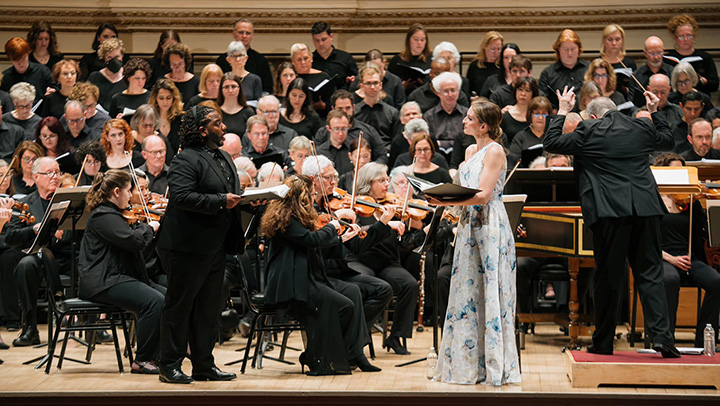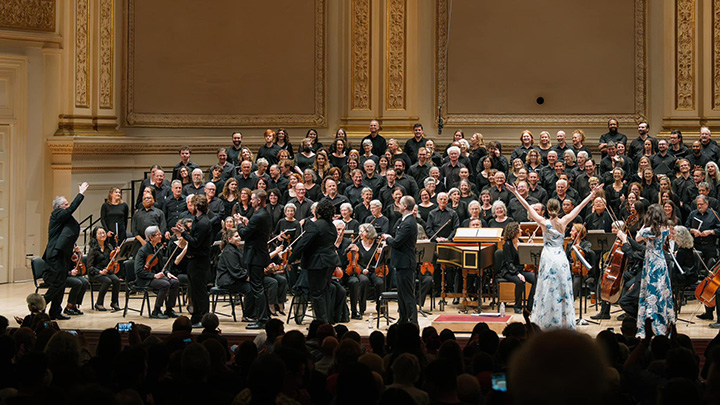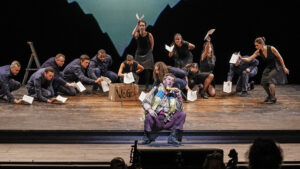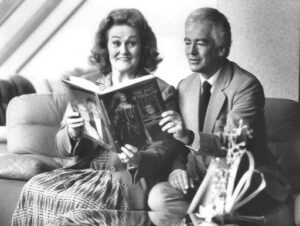If the story is well known—if it is, say, Biblical or legendary—which means that everyone knows, pretty much, how it will conclude—the dramatist’s options for raising and releasing tension are narrowed. But to the great creative artist, restrictions on originality often enhance creativity.
The story of Samson and Delilah from the Book of Judges contains memorable characters, moral cautions, and a conclusion of lip-smacking satisfaction. But since we all know how it’s going to turn out (and the resources of an oratorio stage—Bible stories were outlawed in British theaters until the twentieth century—are limited to the non-visual), Handel was thrown upon his musical creativity to render it thrilling. Being Handel, he took those challenges seriously.
Samson has been blessed with heroic strength. He is charged with a patriotic task, he possesses a secret that is the soul of his God-given gifts, and a tragic flaw (sensuality) that leads to his downfall (blindness, which could be a metaphor for all sorts of things)—and to an unforgettable climactic deed, necessarily offstage.
He, and he alone, by God’s grace, taking advantage of his enemies’ folly, pulls down the Temple of Dagon, a Philistine deity vague on attributes. She/he was one of those non-binary numens, which should make her/him rather popular today than not. And no composer of this story has ever been so prim as to resist delighting in the rites of Dagon.
Long after Handel’s day, Saint-Saëns, with the dramatic model of Meyerbeer’s grand operas firmly before him, got more action into the thing: Biblical lamentation, Delilah’s amorality, a glorious love duet without love, an exciting betrayal to an exciting tune. Samson, blinded, repents—and then we get the Bacchanale and Orgy, pagan triumphalism, thrills and chills—and only at the very last instant do the Bad Guys lose, having forfeited their moral standing during their half hour of froth.
The Monday night before last, at Carnegie Hall, the Oratorio Society of New York presented Handel’s Samson, an oratorio of 1743 (revised 1749), one of the most exciting of the great man’s Biblical narratives. The basis for the oratorio is John Milton’s Samson Agonistes, turned into arias and choruses by one Newburgh Hamilton. Handel, who was working on it simultaneously with Messiah, found the finished product unwieldy and tightened it over the next few years.
As a drama, Samson’s construction is impressively similar to Greek tragedy, with minor characters representing points of view for the errant hero to spar with, offstage action overheard and reported, illustrated both by choruses and by “symphonic” annotations—the heinous rituals, the ceiling falling in, a dead march and so on. Clearly, librettist Hamilton had studied the Sophoclean method.
Samson’s popularity was immediate and lasting. In the modern era, it has even been staged—the Met presented it for Jon Vickers in 1986, late in his career. New York’s venerable Oratorio Society, however, has not given it since 1948, and then in the more intimate but grand acoustic of St. Thomas Church.
Lawrence Jones sounds nothing like the barking, Wagnerian Vickers. Rather, he sounds like a Handel tenor of the traditional line, his diction clear, vocal line unforced but forthright, guilt internal but not brooding. This is not how we see our heroic figures in these Marvel days, but it is how Handel saw them: emotionally open and assured, full of regret but not neurotic about it.
Hamilton and Handel begin where Saint-Saëns commences his own Act III. Samson, blinded and enslaved, is depressed and repentant—his faith in his God unshaken, but his faith in himself rock bottom. Just to challenge his mood, we hear the worshipers of Dagon preparing their festival. Samson receives comforters in the persons of Micah (a mezzo-soprano prophet), a chorus of Israelites in psalmic mode, and even Manoa, his frustrated father hoping to intercede with the Philistine authorities. The reassurances of his friends do very little to raise his spirits.
Mary Beth Nelson sang Micah, which appears to have been composed for a singer of a greater range. Nelson was clear and poised in silvery melodies but lost power and quality in her lowest notes. An uncomfortable fit.
Sidney Outlaw sang Manoa ingratiatingly, his light bass contrasting well with that of Joseph Beutel, who sang a Philstine aspirant Goliath named Harapha. Harapha is that familiar Handelian character, the rumbustious, confident, deep-voiced general. He scorns to fight a blind man but wishes they had met in combat—a boast that Samson sarcastically sees through: “Boast not of what thou wouldst have done, but do.” Beutel made many attractive sounds, but sometimes wandered from the line in his enthusiasm.

In Act II, Dalila shows up, not just to gloat but to excuse her conduct: “A mutual weakness mutual pardon claims.” Whatever you think of her, Handel spotted the chance for a couple of mood-changing arias. Samson is not beguiled, but we are! Handel leaps at the chance for a duet! He also gives us an aria with echo (Heather Lake sang the echo), just to explore the seductive side of incorrigible Dalila. It’s a situation ripe for cliché, but Handel, typically, gives it variety and spice, and the act ends with rival choruses invoking Dagon and Jehovah. It’s like hearing the halftime from the next room.
Dalila—and several minor figures such as the Israelitish Woman—was sung by Nola Richardson in a voice for which Handel might have designed the music. She possesses clarity and a bell-like beauty, and when called for, expanded her sound subtly to fill the enormous room. She gave such pleasure we hoped Samson would forgive her. And we were thrilled when she returned at the evening’s conclusion to sing “Let the Bright Seraphim,” an aria Joan Sutherland (in the 1950s) and Kiri Te Kanawa (at Charles and Diana’s wedding) made familiar and popular.
David Freides was affecting in the small but pivotal role of the Messenger who reports Samson’s death and the destruction of Dagon’s temple—in case we haven’t heard it happen, which, thanks to the orchestra and Handel’s invention, we had: “A Symphony of Horror and Confusion,” off-stage but clear.
Kent Tritle led the Oratorio Society in a bright-toned and lively representation of the work that, despite some raggedness here and there, proved dramatic and engrossing, an evening of many delectable moments, fresh laurels for Handel’s ever-renewing crown.
Photos: Oratorio Society of New York








Comments